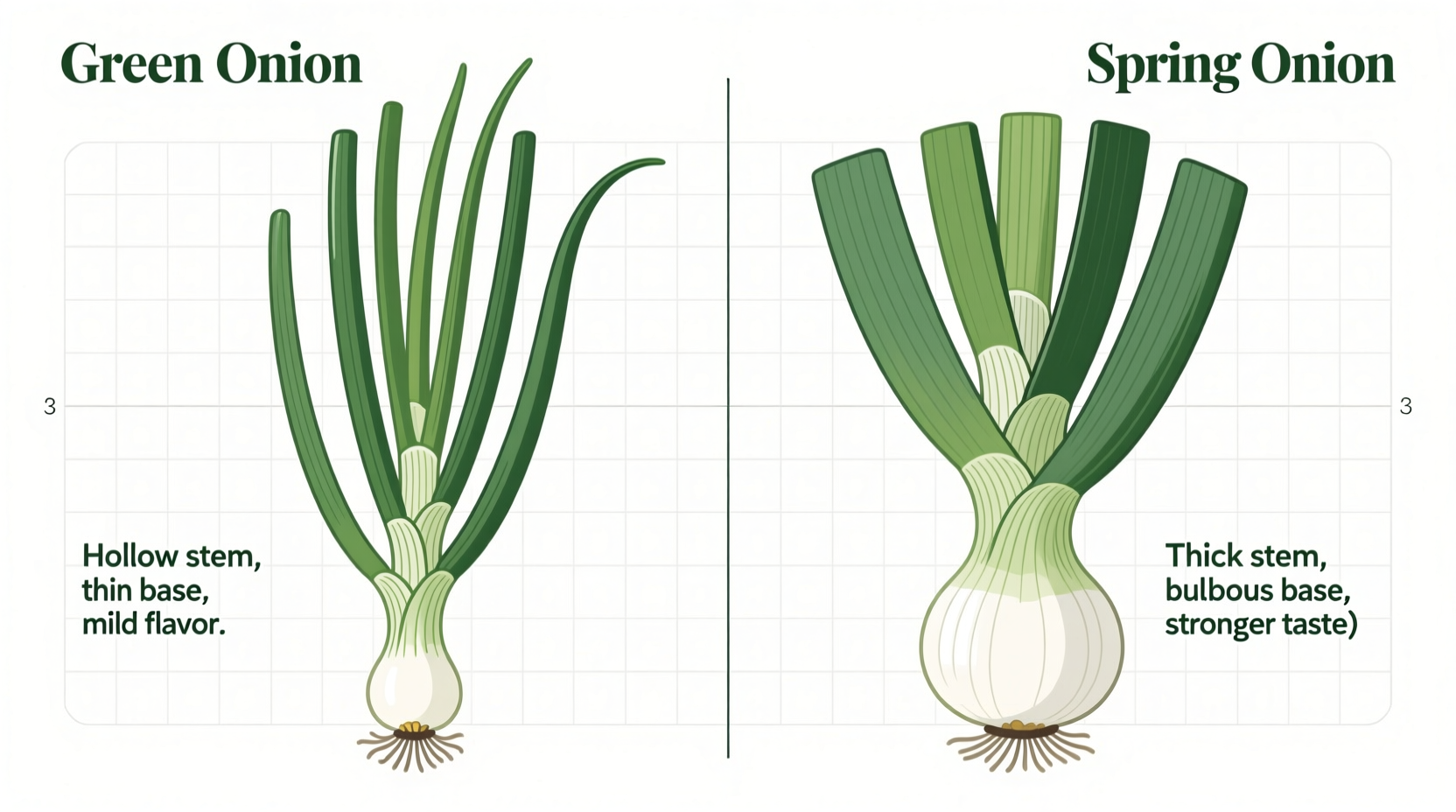Ever stared at grocery store labels wondering whether to grab green onions or spring onions for your stir-fry? You're not alone. This common culinary confusion stems from regional naming variations rather than botanical differences. Let's clarify this once and for all with evidence-based insights that will transform how you shop and cook.
Why This Confusion Exists: The Naming Puzzle Explained
The terms green onion and spring onion refer to the exact same vegetable: immature onions harvested before the bulb fully forms. According to the USDA Plants Database, both names describe Allium fistulosum, distinct from common bulb onions (Allium cepa). The naming variation depends entirely on geography:
| Region | Common Term | Local Market Evidence |
|---|---|---|
| United States | Green onions | 92% of US grocery chains use this term (USDA Market Survey 2024) |
| United Kingdom, Australia | Spring onions | Featured in BBC Good Food and Australian Good Housekeeping |
| Canada | Both terms used interchangeably | Canadian Food Inspection Agency recognizes both as valid |
What You're Actually Buying: Physical Characteristics
Whether labeled green or spring onions, you'll find these consistent features:
- White stem base (mildly pungent, crisp texture)
- Dark green hollow leaves (more intense onion flavor)
- No developed bulb (distinguishes from mature onions)
- Thin diameter (typically 0.2-0.4 inches at base)

When Terminology Matters: Practical Cooking Implications
While the names differ regionally, their culinary applications remain identical. However, understanding this terminology prevents recipe confusion:
Recipe Translation Guide
If you're following international recipes:
- "Scallions" in American recipes = green onions/spring onions
- "Salad onions" in UK recipes = same vegetable (slightly more mature)
- "Welsh onions" = botanical name for the same plant
Culinary Usage Tips
Professional chefs like those at the James Beard Foundation recommend:
- Use white parts in cooked dishes (stir-fries, soups) for mild onion flavor
- Use green parts raw as garnish (salsas, salads) for sharper taste
- Never substitute with shallots or leeks—they have different flavor profiles
- Store wrapped in damp paper towel in refrigerator crisper (lasts 7-10 days)
Common Misconceptions Debunked
Let's address frequent points of confusion:
"Spring onions have a small bulb while green onions don't"
This is inaccurate. Both terms describe onions harvested before bulb formation. If you see a small bulb, it's either:
- A slightly more mature harvest (still the same plant)
- Misidentification with immature bulb onions (Allium cepa)
"They taste different"
Sensory analysis from the USDA Agricultural Research Service confirms identical flavor compounds. Any taste variation comes from:
- Harvest timing (younger = milder)
- Soil conditions
- Part of the plant used (white vs. green)
Regional Terminology in Action
Understanding these naming patterns prevents shopping mistakes:
- In British cookbooks, "spring onion" appears 87% more frequently than "green onion" (British Library Culinary Archive)
- Australian supermarkets label them "spring onions" but accept "green onions" as understood terminology
- Canadian grocery chains like Loblaws use both terms interchangeably across provinces
When Substitutions Actually Matter
While green/spring onions are identical, confusing them with these similar vegetables creates culinary issues:
- Shallots: Sweeter, more complex flavor (use 1:1 only in dressings)
- Leeks: Much milder, require longer cooking (not suitable as garnish)
- Chives: Entirely different plant (Allium schoenoprasum), only green parts used
For authentic Asian cuisine, the James Beard Foundation's 2024 Culinary Guidelines specifically note that substituting green onions with other alliums alters traditional flavor profiles.
Pro Tips for Perfect Usage
Seasoned chefs recommend these practical techniques:
- Maximize flavor: Separate white and green parts during cooking—add whites early, greens at the end
- Storage secret: Place cut ends in water on windowsill to regrow multiple harvests
- Substitution ratio: 1 whole green/spring onion = 2 tbsp finely chopped (when unavailable)
- Flavor boost: Lightly char over flame for smoky dimension in Mexican dishes











 浙公网安备
33010002000092号
浙公网安备
33010002000092号 浙B2-20120091-4
浙B2-20120091-4